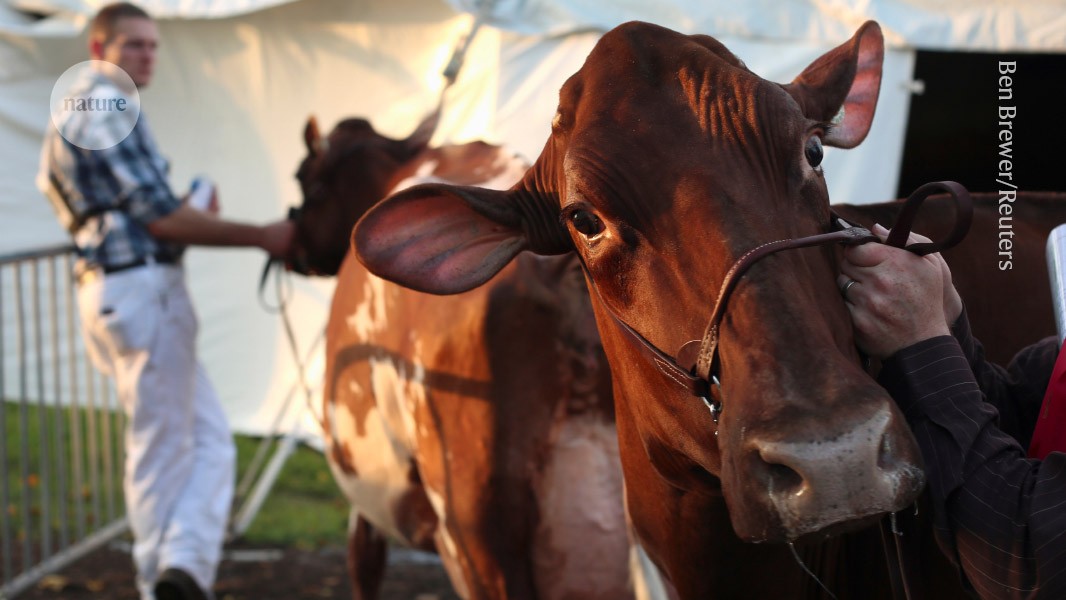Beaumont, C., Fullsack, P. & Hamilton, J. in Thrust Tectonics (ed. McClay, K. R.) 1–18 (Springer, 1992).
Willett, S. D. Orogeny and orography: the effects of erosion on the structure of mountain belts. J. Geophys. Res. Solid Earth 104, 28957–28981 (1999).
Whipple, K. X., Kirby, E. & Brocklehurst, S. H. Geomorphic limits to climate-induced increases in topographic relief. Nature 401, 39–43 (1999).
Beaumont, C., Jamieson, R. A., Nguyen, M. H. & Lee, B. Himalayan tectonics explained by extrusion of a low-viscosity crustal channel coupled to focused surface denudation. Nature 414, 738–742 (2001).
Braun, J. & Willett, S. D. A very efficient O(n), implicit and parallel method to solve the stream power equation governing fluvial incision and landscape evolution. Geomorphology 180, 170–179 (2013).
Yuan, X. P., Braun, J., Guerit, L., Rouby, D. & Cordonnier, G. A new efficient method to solve the stream power law model taking into account sediment deposition. J. Geophys. Res. Earth Surface 124, 1346–1365 (2019).
Thieulot, C. FANTOM: two-and three-dimensional numerical modelling of creeping flows for the solution of geological problems. Phys. Earth Planet. Inter. 188, 47–68 (2011).
Willett, S. D. & Brandon, M. T. On steady states in mountain belts. Geology 30, 175–178 (2002).
Beaumont, C., Nguyen, M. H., Jamieson, R. A. & Ellis, S. Crustal flow modes in large hot orogens. Geol. Soc. Spec. Publ. 268, 91–145 (2006).
Whipple, K. X. & Tucker, G. E. Dynamics of the stream-power river incision model: implications for height limits of mountain ranges, landscape response timescales, and research needs. J. Geophys. Res. Solid Earth 104, 17661–17674 (1999).
Dadson, S. J. et al. Links between erosion, runoff variability and seismicity in the Taiwan orogen. Nature 426, 648–651 (2003).
Koons, P. O. The topographic evolution of collisional mountain belts – a numerical look at the Southern Alps, New Zealand. Am. J. Sci. 289, 1041–1069 (1989).
Molnar, P. & England, P. Late Cenozoic uplift of mountain-ranges and global climate change – chicken or egg. Nature 346, 29–34 (1990).
Tucker, G. E. & Bras, R. L. A stochastic approach to modeling the role of rainfall variability in drainage basin evolution. Water Resour. Res. 36, 1953–1964 (2000).
Hartshorn, K., Hovius, N., Dade, W. B. & Slingerland, R. L. Climate-driven bedrock incision in an active mountain belt. Science 297, 2036–2038 (2002).
Whipple, K. X. & Meade, B. J. Orogen response to changes in climatic and tectonic forcing. Earth Planet. Sci. Lett. 243, 218–228 (2006).
Willett, S. D., Schlunegger, F. & Picotti, V. Messinian climate change and erosional destruction of the central European Alps. Geology 34, 613–616 (2006).
Hilley, G. E. et al. Earth’s topographic relief potentially limited by an upper bound on channel steepness. Nat. Geosci. 12, 828–832 (2019).
Baldwin, J. A., Whipple, K. X. & Tucker, G. E. Implications of the shear stress river incision model for the timescale of postorogenic decay of topography. J. Geophys. Res. Solid Earth 108, 2158 (2003).
Egholm, D. L., Knudsen, M. F. & Sandiford, M. Lifespan of mountain ranges scaled by feedbacks between landsliding and erosion by rivers. Nature 498, 475–478 (2013).
Molnar, P. & Lyon-Caen, H. Some simple physical aspects of the support, structure, and evolution of mountain belts. Geol. Soc. Am. Spec. Pap. 218, 179–207 (1988).
Sandiford, M. & Powell, R. Some isostatic and thermal consequences of the vertical strain geometry in convergent orogens. Earth Planet. Sci. Lett. 98, 154–165 (1990).
Zhou, S. H. & Sandiford, M. On the stability of isostatically compensated mountain belts. J. Geophys. Res. Solid Earth 97, 14207–14221 (1992).
Vanderhaeghe, O., Medvedev, S., Fullsack, P., Beaumont, C. & Jamieson, R. A. Evolution of orogenic wedges and continental plateaux: insights from crustal thermal-mechanical models overlying subducting mantle lithosphere. Geophys. J. Int. 153, 27–51 (2003).
Wolf, S. G. & Huismans, R. S. Mountain building or backarc extension in ocean-continent subduction systems: a function of backarc lithospheric strength and absolute plate velocities. J. Geophys. Res. Solid Earth 124, 7461–7482 (2019).
Whipple, K. X. Bedrock rivers and the geomorphology of active orogens. Ann. Rev. Earth Planet. Sci. 32, 151–185 (2004).
Sklar, L. S. & Dietrich, W. E. Sediment and rock strength controls on river incision into bedrock. Geology 29, 1087–1090 (2001).
Molnar, P., Anderson, R. S. & Anderson, S. P. Tectonics, fracturing of rock, and erosion. J. Geophys. Res. Earth Surf. 112, F03014 (2007).
Starke, J., Ehlers, T. A. & Schaller, M. Latitudinal effect of vegetation on erosion rates identified along western South America. Science 367, 1358–1361 (2020).
Ellis, S., Fullsack, P. & Beaumont, C. Oblique convergence of the crust driven by basal forcing -implications for length-scales of deformation and strain partitioning in orogens. Geophys. J. Int. 120, 24–44 (1995).
Batt, G. E. & Braun, J. The tectonic evolution of the Southern Alps, New Zealand: insights from fully thermally coupled dynamical modelling. Geophys. J. Int. 136, 403–420 (1999).
Norris, R. J. & Cooper, A. F. Late Quaternary slip rates and slip partitioning on the Alpine Fault, New Zealand. J. Struct. Geol. 23, 507–520 (2001).
Little, T. A. Transpressive ductile flow and oblique ramping of lower crust in a two-sided orogen: insight from quartz grain-shape fabrics near the Alpine fault, New Zealand. Tectonics 23, TC2013 (2004).
Jiao, R., Herman, F. & Seward, D. Late Cenozoic exhumation model of New Zealand: impacts from tectonics and climate. Earth Sci. Rev. 166, 286–298 (2017).
Herman, F., Cox, S. C. & Kamp, P. J. J. Low-temperature thermochronology and thermokinematic modeling of deformation, exhumation, and development of topography in the central Southern Alps, New Zealand. Tectonics 28, https://doi.org/10.1029/2008TC002367 (2009).
Suppe, J. A retrodeformable cross section of northern Taiwan. Proc. Geol. Soc. China 23, 46–55 (1980).
Brown, D., Alvarez-Marron, J., Schimmel, M., Wu, Y. M. & Camanni, G. The structure and kinematics of the central Taiwan mountain belt derived from geological and seismicity data. Tectonics 31, TC5013 (2012).
Brown, D. et al. How the structural architecture of the Eurasian continental margin affects the structure, seismicity, and topography of the south central Taiwan fold-and-thrust belt. Tectonics 36, 1275–1294 (2017).
Simoes, M. et al. Mountain building in Taiwan: a thermokinematic model. J. Geophys. Res. Solid Earth 112, https://doi.org/10.1029/2006JB004824 (2007).
Van Avendonk, H. J. A. et al. Deep crustal structure of an arc-continent collision: constraints from seismic traveltimes in central Taiwan and the Philippine Sea. J. Geophys. Res. Solid Earth 119, 8397–8416 (2014).
DeCelles, P. et al. Geodynamics of a Cordilleran Orogenic System: The Central Andes of Argentina and Northern Chile (Geological Society of America, 2015).
Replumaz, A., Negredo, A. M., Guillot, S., van der Beek, P. & Villasenor, A. Crustal mass budget and recycling during the India/Asia collision. Tectonophysics 492, 99–107 (2010).
Ingalls, M., Rowley, D. B., Currie, B. & Colman, A. S. Large-scale subduction of continental crust implied by India-Asia mass-balance calculation. Nat. Geosci. 9, 848–853 (2016).
Schmalholz, S. M., Medvedev, S., Lechmann, S. M. & Podladchikov, Y. Relationship between tectonic overpressure, deviatoric stress, driving force, isostasy and gravitational potential energy. Geophys. J. Int. 197, 680–696 (2014).
Burbank, D. W. et al. Bedrock incision, rock uplift and threshold hillslopes in the northwestern Himalayas. Nature 379, 505–510 (1996).
Herman, F. et al. Exhumation, crustal deformation, and thermal structure of the Nepal Himalaya derived from the inversion of thermochronological and thermobarometric data and modeling of the topography. J. Geophys. Res. Solid Earth 115, https://doi.org/10.1029/2008JB006126 (2010).
Oncken, O. et al. in The Andes. Frontiers in Earth Sciences (eds Oncken, O. et al.) 3–27 (Springer, 2006).
Schellart, W. P., Freeman, J., Stegman, D. R., Moresi, L. & May, D. Evolution and diversity of subduction zones controlled by slab width. Nature 446, 308–311 (2007).
Wobus, C. W., Hodges, K. V. & Whipple, K. X. Has focused denudation sustained active thrusting at the Himalayan topographic front? Geology 31, 861–864 (2003).
Kirby, E. & Whipple, K. X. Expression of active tectonics in erosional landscapes. J. Struct. Geol. 44, 54–75 (2012).
Curry, M. E., van der Beek, P., Huismans, R. S., Wolf, S. G. & Muñoz, J. A. Evolving paleotopography and lithospheric flexure of the Pyrenean Orogen from 3D flexural modeling and basin analysis. Earth Planet. Sci. Lett. 515, 26–37 (2019).
Harel, M.-A., Mudd, S. & Attal, M. Global analysis of the stream power law parameters based on worldwide 10Be denudation rates. Geomorphology 268, 184–196 (2016).
Stock, J. D. & Montgomery, D. R. Geologic constraints on bedrock river incision using the stream power law. J. Geophys. Res. Solid Earth 104, 4983–4993 (1999).
Guerit, L. et al. Fluvial landscape evolution controlled by the sediment deposition coefficient: Estimation from experimental and natural landscapes. Geology 47, 853–856 (2019).
Densmore, A. L., Allen, P. A. & Simpson, G. Development and response of a coupled catchment fan system under changing tectonic and climatic forcing. J. Geophys. Res. Earth Sci. 112, F01002 (2007).
Armitage, J. J., Jones, T. D., Duller, R. A., Whittaker, A. C. & Allen, P. A. Temporal buffering of climate-driven sediment flux cycles by transient catchment response. Earth Planet. Sci. Lett. 369, 200–210 (2013).
England, P. & McKenzie, D. A thin viscous sheet model for continental deformation. Geophys. J. R. Astron. Soc. 70, 295–321 (1982).
England, P. & McKenzie, D. Correction to – A thin viscous sheet model for continental deformation. Geophys. J. R. Astron. Soc. 73, 523–532 (1983).
Wobus, C. et al. in Tectonics, Climate, and Landscape Evolution (eds Willett, S. D., Hovius, N., Brandon, M. T. & Fisher, D. M.) 55–74 (Geological Society of America, 2006).
Gleason, G. C. & Tullis, J. A flow law for dislocation creep of quartz aggregates determined with the molten-salt cell. Tectonophysics 247, 1–23 (1995).
Mackwell, S. J., Zimmerman, M. E. & Kohlstedt, D. L. High-temperature deformation of dry diabase with application to tectonics on Venus. J. Geophys. Res. Solid Earth 103, 975–984 (1998).
Karato, S. & Wu, P. Rheology of the upper mantle – a synthesis. Science 260, 771–778 (1993).
Owens, T. J. & Zandt, G. Implications of crustal property variations for models of Tibetan plateau evolution. Nature 387, 37–43 (1997).







More News
Bird flu in US cows: where will it end?
Daily briefing: Why exercise is good for us
Daily briefing: Orangutan is first wild animal seen using medicinal plant